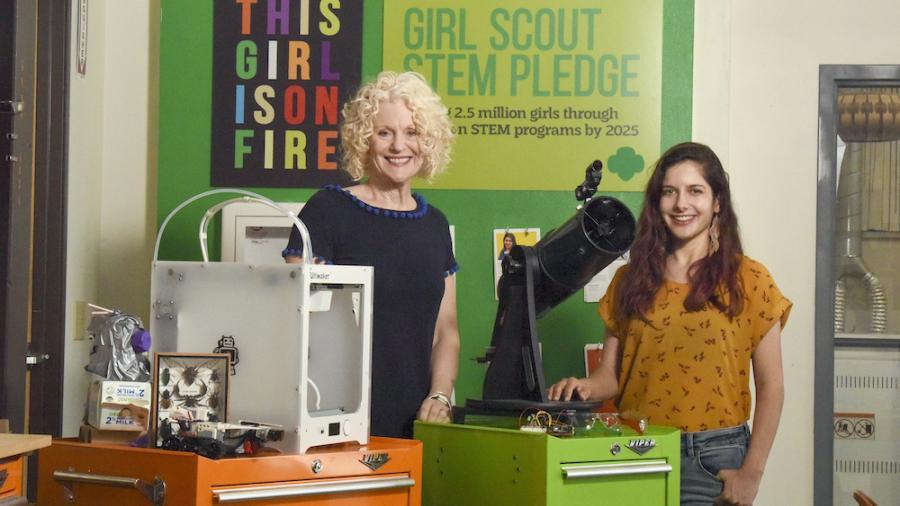Westmont Magazine Giving Girls Experiences With Stem

Linda Farley ’79 worked in STEM decades before the Natural Science Foundation coined the term for science, technology, engineering and math. After a few years of teaching, she moved to a county education office to help teachers use a new technology: computers. Meanwhile, she earned a master’s degree in curriculum and instruction at Michigan State and a Doctor of Education in leadership at the University of St. Thomas in Minnesota.
In 1993, she led a $6 million grant to build a school of the future in a small district in McKinney, Texas. “The Department of Education wanted to see what an infusion of technology could do for a school,” she says. With assistance from architects, she oversaw a renovation that created wired networks wherever students spent time, a forerunner of wireless networks. “We helped kids understand how to use technology as a tool,” she says. “I got the school up and running—and then realized I wanted to be an innovator who changed things, not a school principal.”
After stints at a multimedia publishing company, the Children’s Museum in Denver— which she helped rescue from bankruptcy and established as a flourishing entity—and the Crocker Art Museum in Sacramento, Linda returned to her roots. In 2013, she became CEO of Girl Scouts Heart of Central California, one of eight councils in the state and the place she’d been a Girl Scout herself.
The organization’s adoption of STEM as one of four core experiences, along with the outdoors, entrepreneurship and life skills, appealed to Linda. Bringing her passion for informal learning and her expertise with STEM, she has established a robust STEM program in the Sacramento area with help from a fellow Westmont alumna, Rachel Parkhurst ’16.
“Research shows that girls don’t understand the wide variety of STEM careers available to them,” Linda says. “We want to expose them to all the possibilities.”
The council has established two STEM centers in Modesto and Sacramento and equipped a mobile one, complete with solar cells on top, which travels to schools and remote areas. Experts like Rachel, who is a physicist, develop the programming. “Rachel and our other STEM specialists go beyond what a volunteer troop leader can provide,” Linda says. She also brings in experts such as paleontologists, forensic scientists and NASA personnel.
Rachel, who conducted research at the Westmont Observatory as a student, designs programs and activities that help girls earn badges in astronomy, space, engineering and robotics. She teaches them how to use 3-D printers and laser cutters. One popular activity, forensic investigation, turns a room into a crime scene where teams of girl detectives lift fingerprints, study a suspect list and read a crime report. Volunteer Leah Parkhurst, who has worked in law enforcement, helps Rachel with this class. “The girls learn to ask good questions, develop their observational and critical thinking skills, and work collaboratively,” Rachel says.
Projects also promote sustainable science by seeking solutions to issues such as water pollution and space junk. “We want to encourage girls to make a contribution to the environment and to their community,” Rachel says.
Rachel felt an overwhelming sense of belonging when she first visited Westmont. “I majored in physics because I wanted to prove I was smart enough to do it,” she says. “It was challenging and difficult, but I gained confidence in my own abilities. I love my job, and I’m passionate about teaching and STEM education.”
Linda majored in liberal studies and appreciated the encouragement to explore what she wanted to do. “All my jobs have involved education, and I fell in love with informal learning and providing meaningful experiences,” she says. “I’ve always been interested in helping people innovate and grow. I love thinking about new ways we can serve girls throughout our 18 counties.”